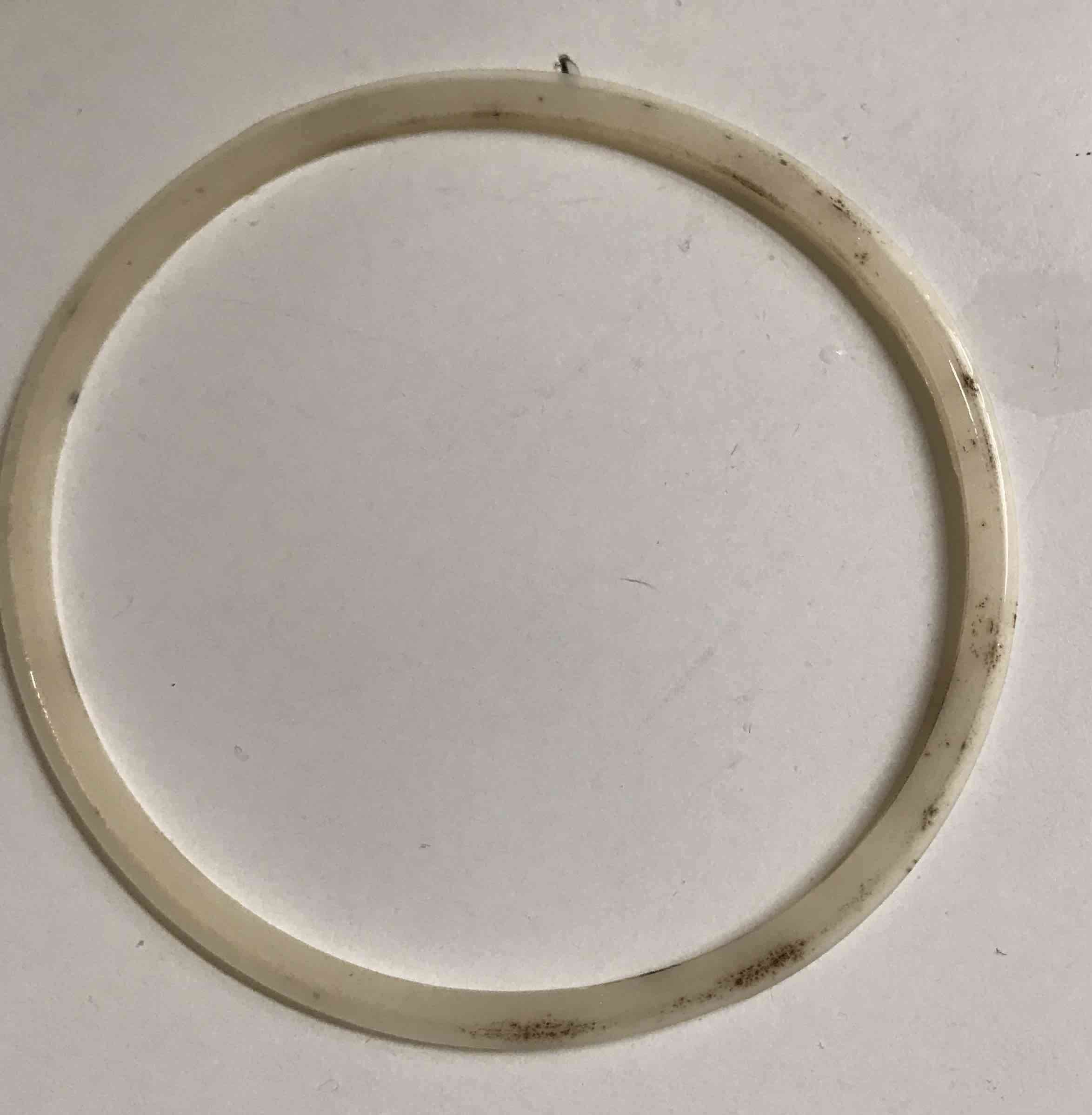Broken Crow
Ale's what cures 'ya
- Joined
- Oct 12, 2020
- Messages
- 2,066
- Reaction score
- 2,610
We’ve all seen stained hoses, but hey; ..”maybe that’s just a film?”.. Our most prized silicone hoses and gaskets often advertise as being ‘Platinum cured” and that’s a good thing because it makes for a less-porous surface. The key word in that is “Less”…Not ‘Non-‘. While this example may not be platinum-cured, it is nonetheless, ‘Food-Grade’. This is basically a bevelled o-ring from a thermal travel-mug I got at work some years back and gave to my girlfriend who used it as her bedside table water glass. Over the years it has faced the microbes of atmosphere and backwash, and as such, the resultant growth over time illustrates something often talked about on here. As a spoiled batch or just an off-taste or simple preventative practice, usually guides us to replace our silicone parts before we can see it, we don’t usually get to actually see what has happened within the structure of our tubes and gaskets. My girlfriend really liked this mug and used it for years… The thing about any common microbial growth is that it can only penetrate as deep as there is a supply of oxygen. Well, even after thoroughly scrubbing, here for your own eyes, is the penetration of O2 in silicone:




